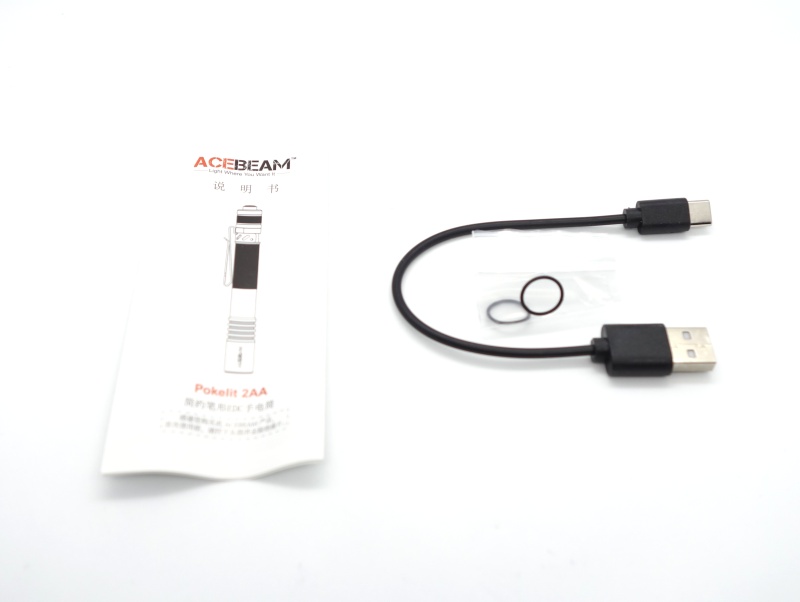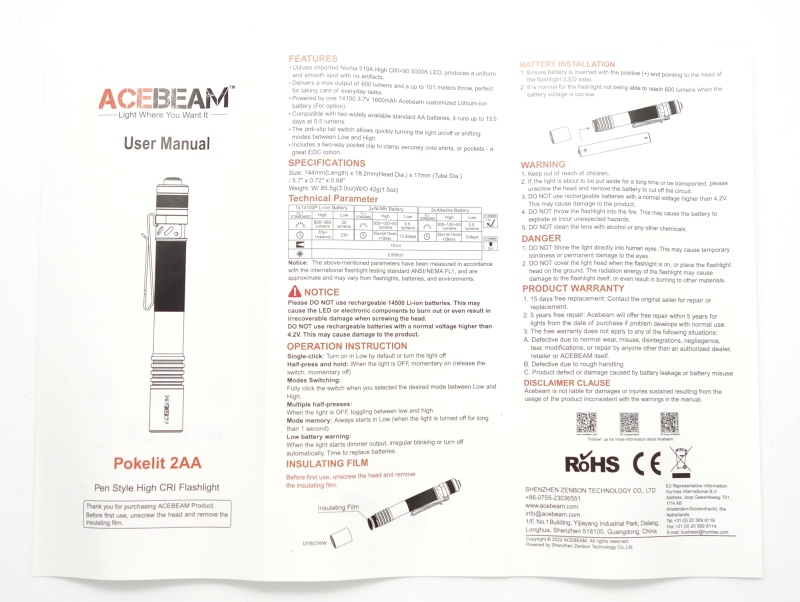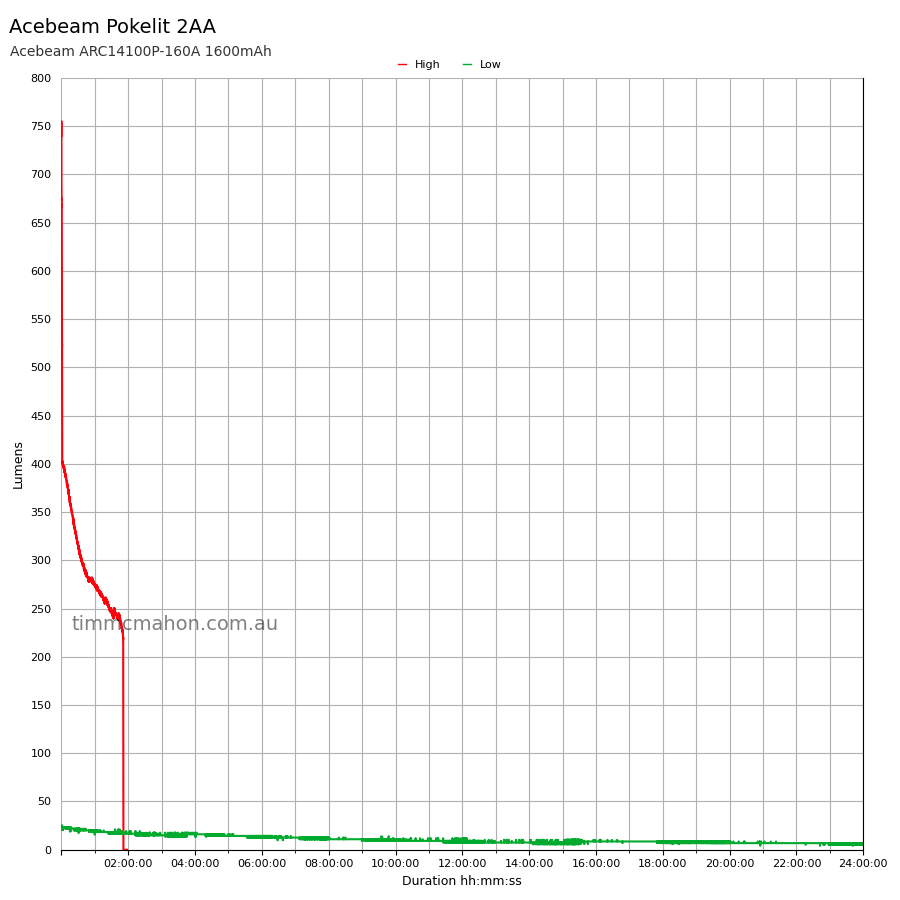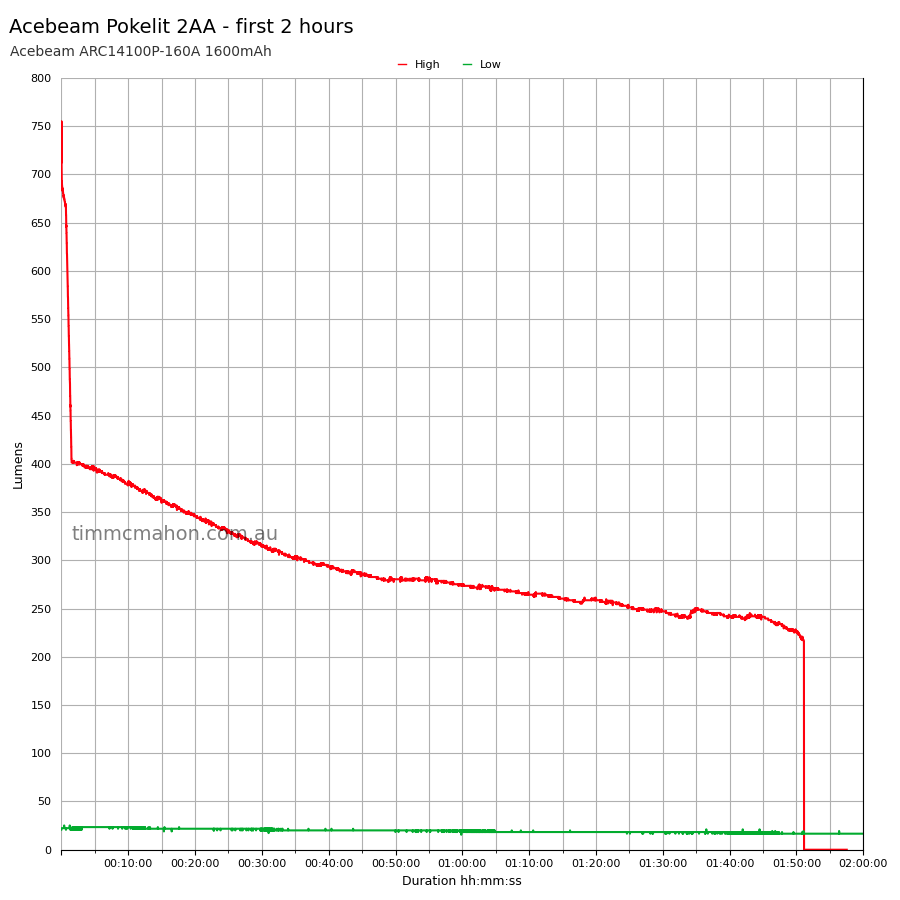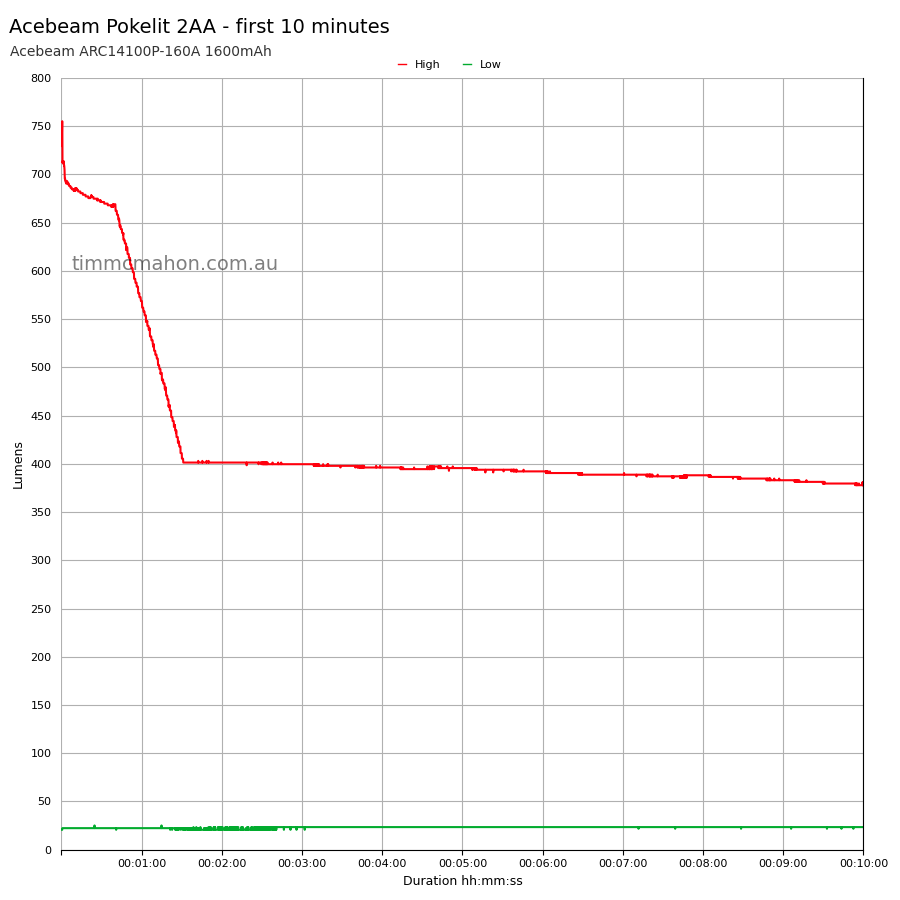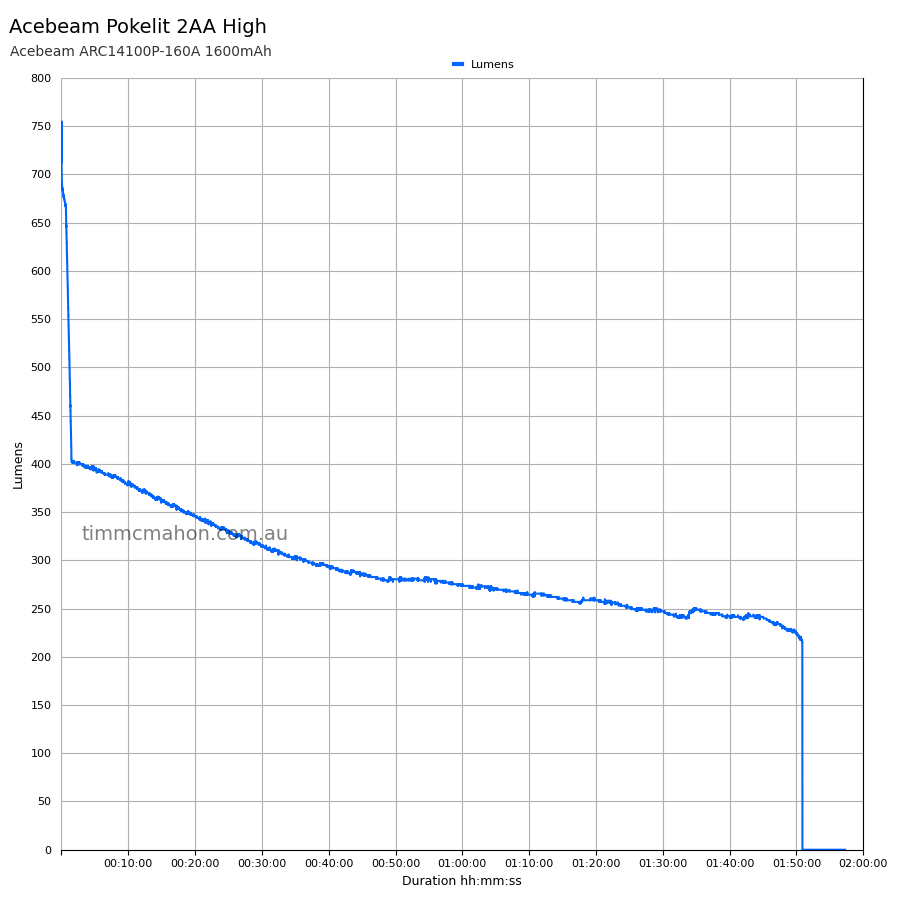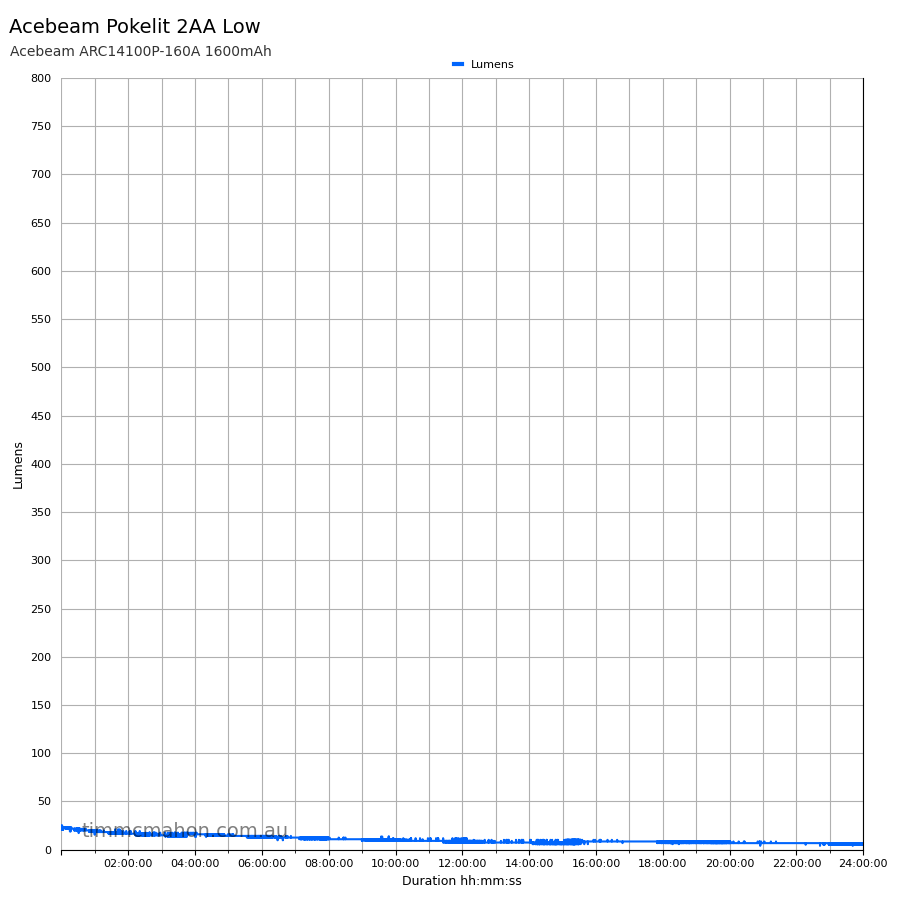Acebeam Pokelit 2AA Review
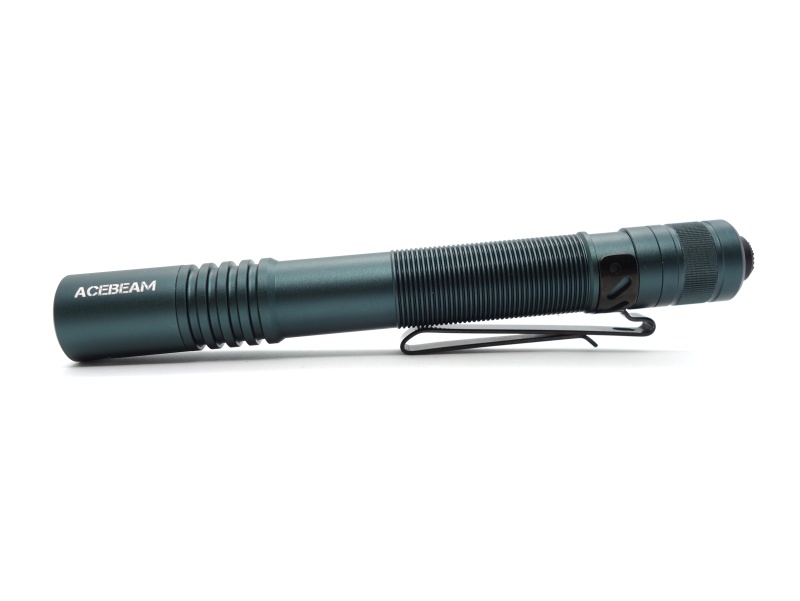
Acebeam Pokelit 2AA#
- Specifications
- Introduction
- Torch in use
- Build quality
- LED, bezel, lens, reflector and beam
- Size and comparison
- User interface
- Batteries and charging
- Performance
- Beamshots
- Conclusion
- Product page
Specifications#
| Brand/model | Acebeam Pokelit 2AA |
|---|---|
| LED | Nichia 519A 5000K |
| Maximum lumens | 600 lm |
| Maximum beam intensity | 2,550 cd |
| Maximum throw | 101 m |
| Battery | 2*AA, 1*14100 Li-ion |
| Onboard charging | Yes (USB-C battery) |
| Material | Aluminium |
| Modes | 2 |
| Blinkies | - |
| Reflector | Smooth |
| Waterproof | - |
| Review date | December 2022 |
Introduction#
The Acebeam Pokelit 2AA in Forest Green was sent by Nealsgadgets for review a few months ago.
I put torch reviewing and work on hold while coming to terms with my mother being in palliative care, passing away, and so that I could focus my time on taking care of my father. Things settled down a little bit around Christmas and I have found a bit of time to complete this review.
The Acebeam Rider RX is notoriously difficult to open up and modify. Olight i3T and i5R are nice EDC options but they too are not easy to modify.
You are kind of stuck with the emitter that a manufacturer chooses unless you can swap it. Thankfully Acebeam have made the Pokelit AA and 2AA with a pill that can be unscrewed to reveal the emitter. Enthusiasts now have more EDC options that can easily be modified!
You may not want to swap the emitter. The Pokelit 2AA comes with a Nichia 519A 5000K emitter. But if you are obsessed with rosy beams, then you may want to dedome the 519A emitter so that it shifts from pure white to a slightly rosy tint.
I have not been paid for this review nor have I held back my opinions of this torch.
Packaging#
The Pokelit 2AA comes in a small white retail box with a window.
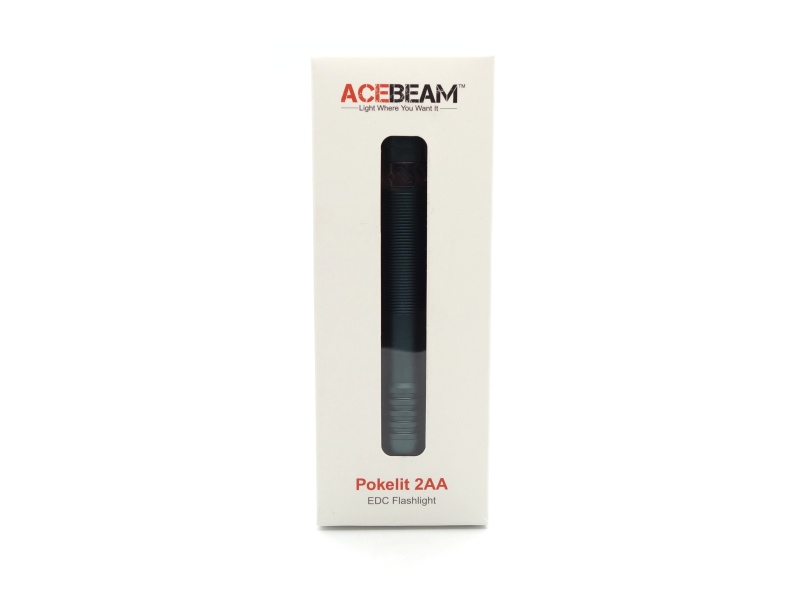
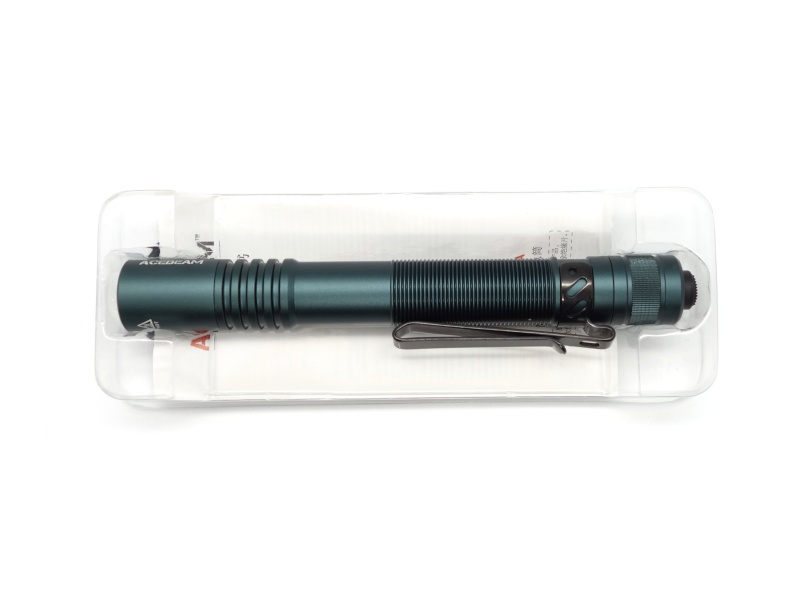
The following was included in the box:
- Acebeam Pokelit 2AA
- Acebeam ARC14100P-160A 1600mAh battery
- Two spare o-rings
- USB-A to USB-C charging cable
Torch in use#
The Acebeam Pokelit 2AA has been by my side for a few months now. I will not modify this one. I have fond memories of using it to help guide my father at night while walking back to the car after seeing my mother while she was deteriorating.
The torch fits my medium sized hands comfortably and fits in my pockets.
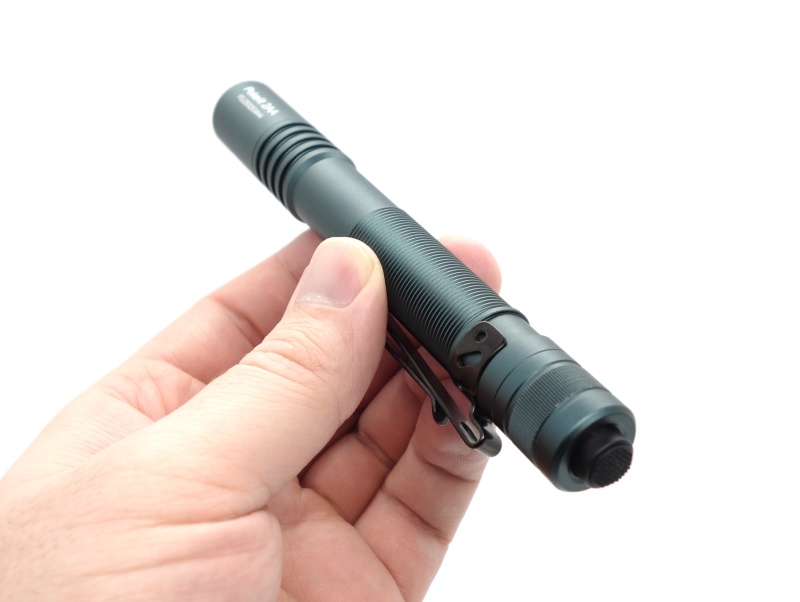
The wide circular beam lights up footpaths efficiently at night without having a harsh hotspot that could be a distraction. I found that the torch gets uncomfortably warm to hold while using it in the High mode after about five minutes. Low was a bit too dim to use to illuminate the footpath clearly so I used High.
The Acebeam Pokelit 2AA could probably be used in a hospital or aged care facility. I have seen doctors use the torch in their phones to inspect pupils. It may be safer to use a Pokelit 2AA with Ni-MH batteries and the mode set to Low (default) compared to the bright flash of a phone.
Build quality#
I have been impressed with the build quality of Acebeam Rider RX Rainbow PVD and the Acebeam E70 Mini. The Acebeam Pokelit 2AA build quality is equally as impressive.
This Acebeam Pokelit 2AA is constructed of aluminium and came anodised in Forest Green. The inner tube is also anodised. And there are no sharp edges.
Rings around half the tube help prevent the torch from slipping out of my hand. As do the fins near the head.
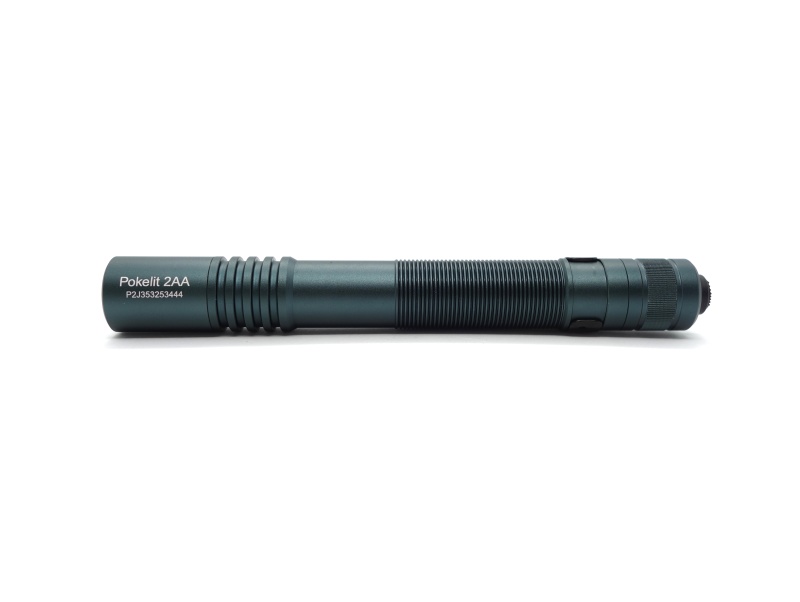
My only complaint is that the square cut threads are not anodized. The head turns smoothly with lubricant but the threads might become gritty over time. That said, I have used this torch for a few months and I have not had to clean the threads.
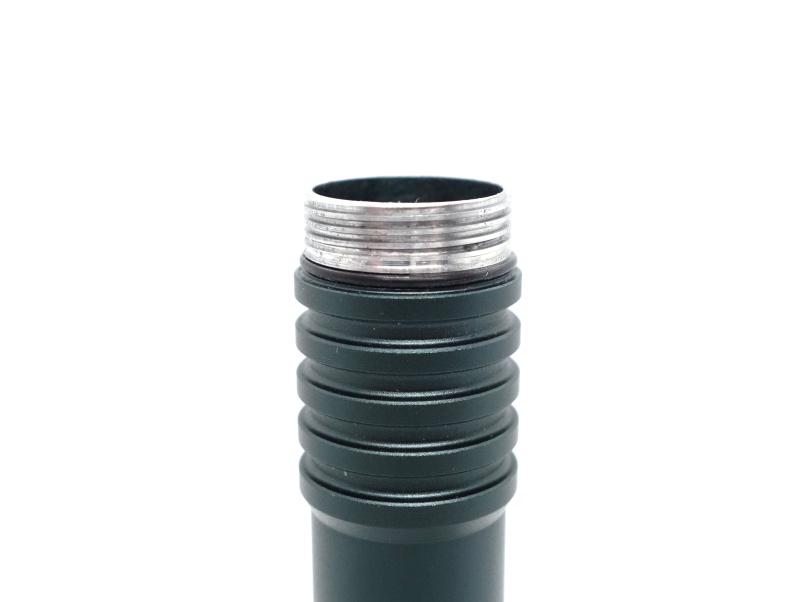
The lack of anodising on the threads is not really an issue in terms of mechanically locking out the torch. There is a mechanical tailswitch.
The tailcap has some grip but it does not unscrew. You might be able to unscrew the switch mechanism with some long tweezers from inside the tube.
The forward-clicky tailswitch feels firm and gives a satisfying click. This button prevents tailstanding.
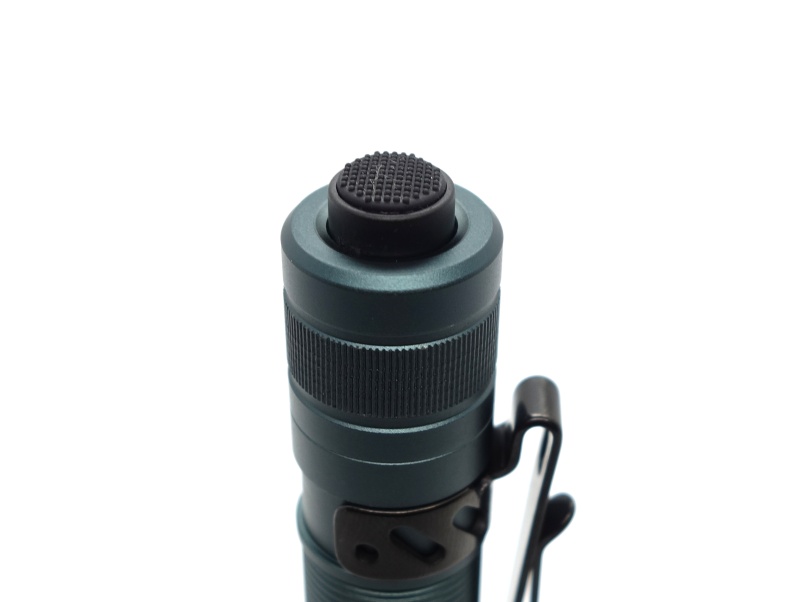
The pocket clip is a tight fit. It can be rotated with force. But I dare not remove the pocket clip out of fear of scratching the tube.
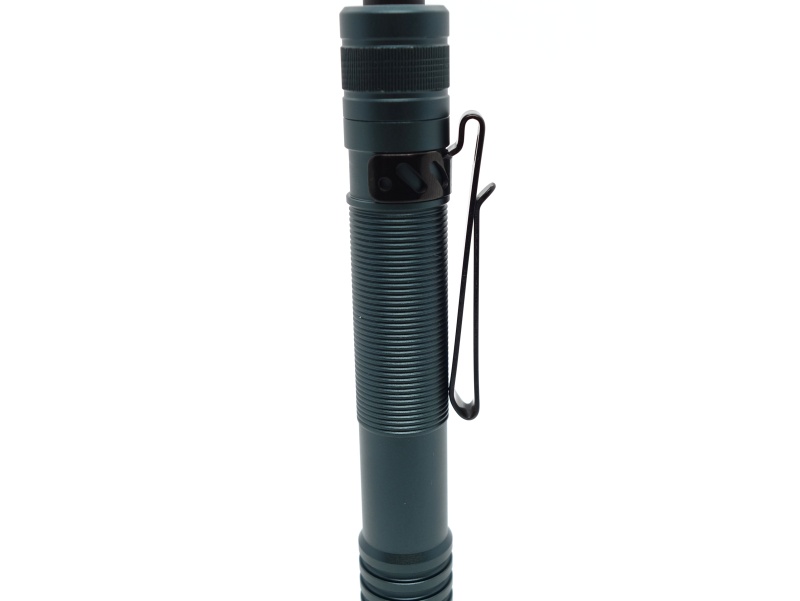
I love how Acebeam have used a copper pill that can be unscrewed and removed from the head to allow enthusiasts to dedome the Nichia 519A emitter. Physical reverse polarity protection on the driver is a nice touch.
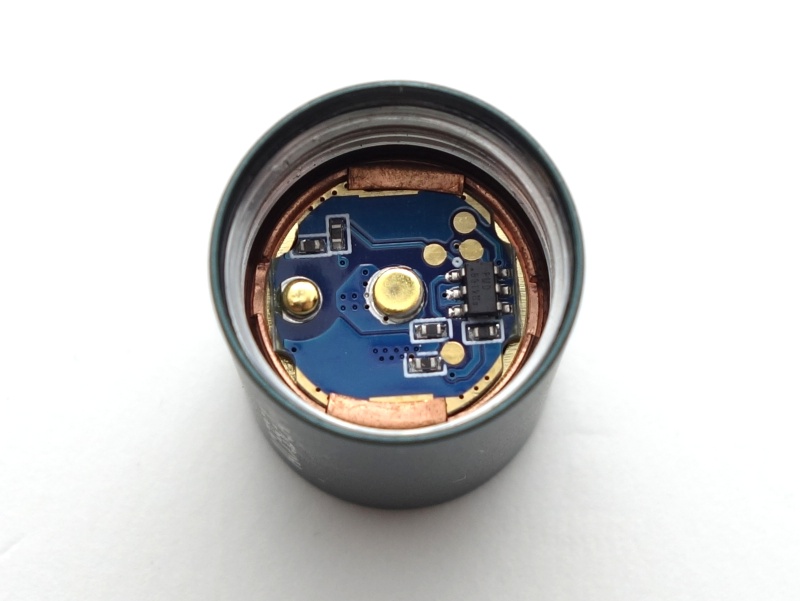
LED, bezel, lens, reflector and beam#
The Acebeam Pokelit 2AA has a Nichia 519A 5000K emitter on a copper MCPCB with a smooth reflector pressing down against a gasket to keep the emitter centered. There is plenty of thermal paste.
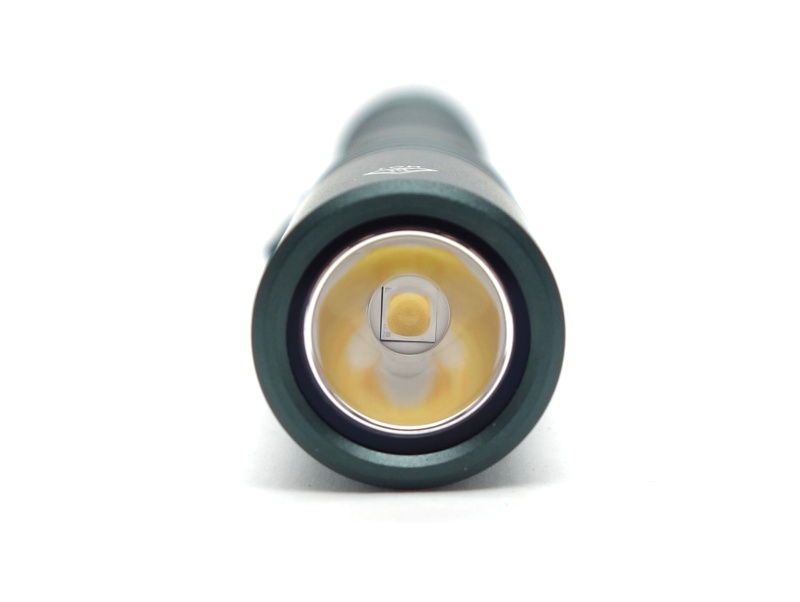
The copper pill in the head can be unscrewed by rotating it clockwise using flat tipped tweezers.
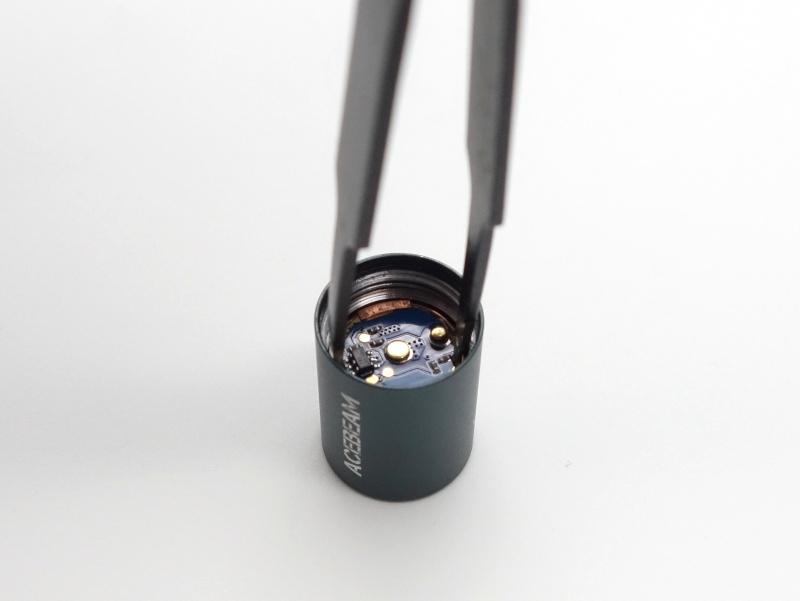
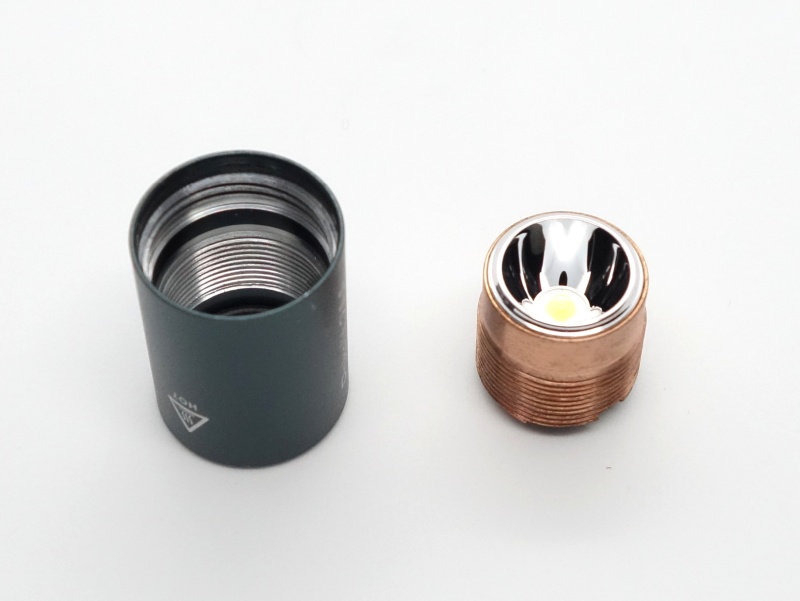
I have taken Correlated Colour Temperature (CCT) and Colour Rendering Index (CRI, RA of R1-R8) measurements with the torch positioned one a metre away from an Opple Light Master Pro III (G3).
The CCT is about 4720K and the CRI is around 96+.
The Delta u, v is fairly neutral (almost pure white).
The beam produces a narrow circle. There is a bit of spill. It seems like a suitable beam for an usher at a movie theatre.
| Mode | CCT (K) | CRI (Ra) | x | y | Duv |
|---|---|---|---|---|---|
| Low | 4672 | 98.0 | 0.3560 | 0.3663 | 0.0031 |
| High | 4768 | 96.8 | 0.3521 | 0.3570 | 0.0000 |
Calculate Duv from CIE 1931 xy coordinates
Acebeam kindly sent a Christmas card and a Pokelit AA Copper with my name laser etched on the tube.
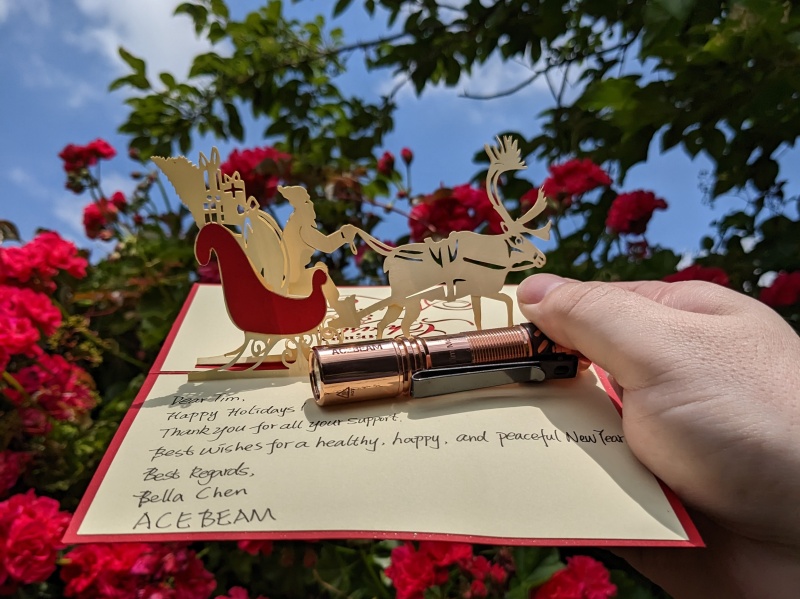
I could not resist opening up the Pokelit AA and dedoming the Nichia 519A 5000K emitter. The colour temperature decreased and the delta u, v dropped slightly (rosier).
| Mode | CCT (K) | CRI (Ra) | Duv |
|---|---|---|---|
| Low | 3639 | 97.0 | -0.0040 |
| Medium | 3878 | 96.6 | -0.0028 |
| High | 3910 | 96.2 | -0.0044 |
You might void the warranty if you attempt this at home. To dedome the Nichia 519 emitter I: removed the pill, removed the reflector and gasket, desoldered the two wires, lifted the MCPCB out, cleaned the thermal paste off, removed the dome with my fingernails by pinching it, cleaned off excess dome using a FEATHER razor, applied new thermal paste, put the MCPCB back in, soldered the driver wires back on, put the gasket and reflector back in, screwed the pill back into the head (counterclockwise).
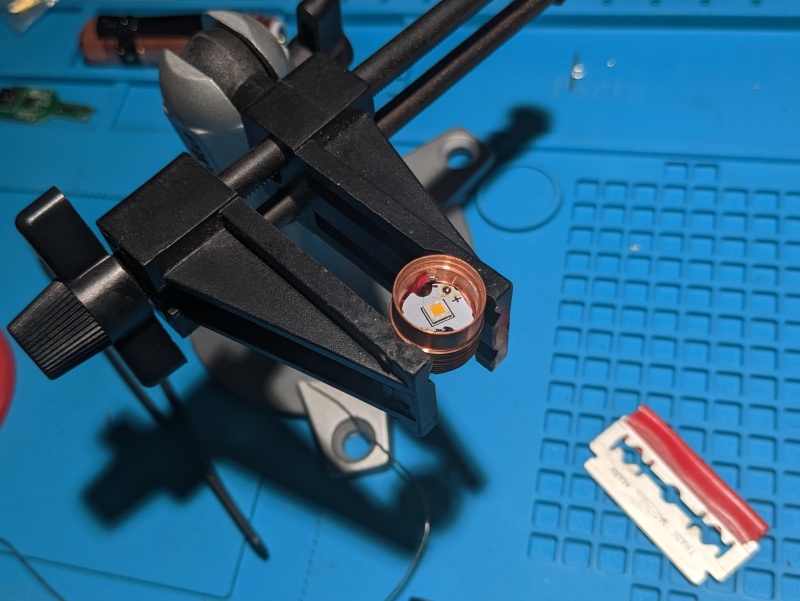
Here is a beamshot comparison of the Pokelit AA Copper dedomed (left) and the Pokelit 2AA (right) set to High:
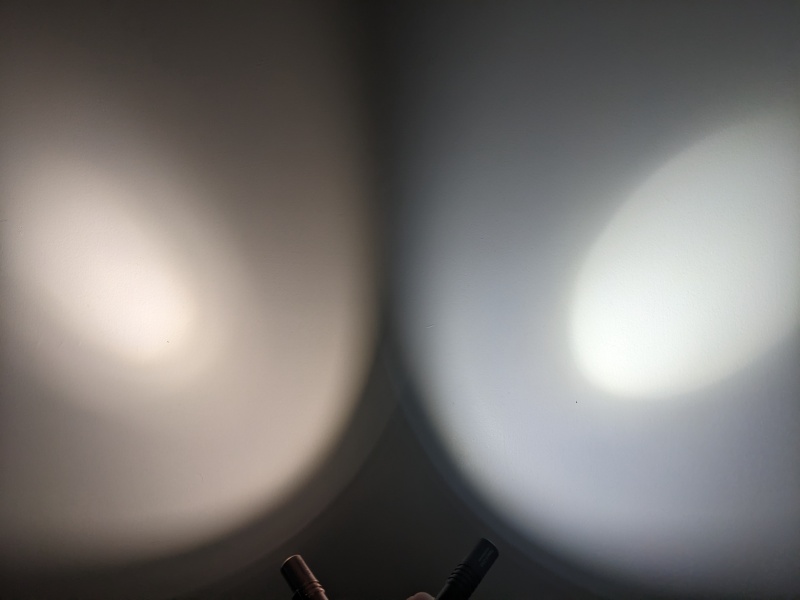
Dimensions and size comparison#
Dimensions#
I took the following measurements using digital callipers.
| Measurement | Unit (mm) |
|---|---|
| Torch length | 144.3 |
| Head diameter | 18.2 |
| Tube diameter | 17.1 |
| Tailcap diameter | 17.8 |
Weight#
I took the following measurements using a digital scale.
| Weight | Unit (g) |
|---|---|
| Torch | 42.1 |
| Battery | 43.2 |
| Torch with battery | 85.3 |
Size comparison with its competition#
The Pokelit 2AA is longer than my other single cell AA and AAA torches.
From left to right: Acebeam Rider RX Rainbow PVD, Acebeam Pokelit 2AA, Acebeam Pokelit AA Copper, Olight i3T Brass
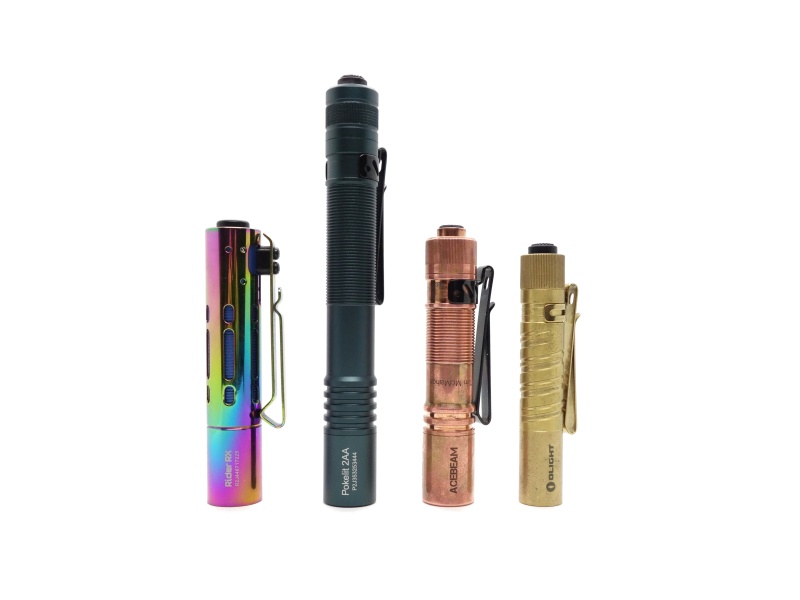
From left to right: Acebeam Rider RX Rainbow PVD, Acebeam Pokelit 2AA, Acebeam Pokelit AA Copper, Olight i3T Brass
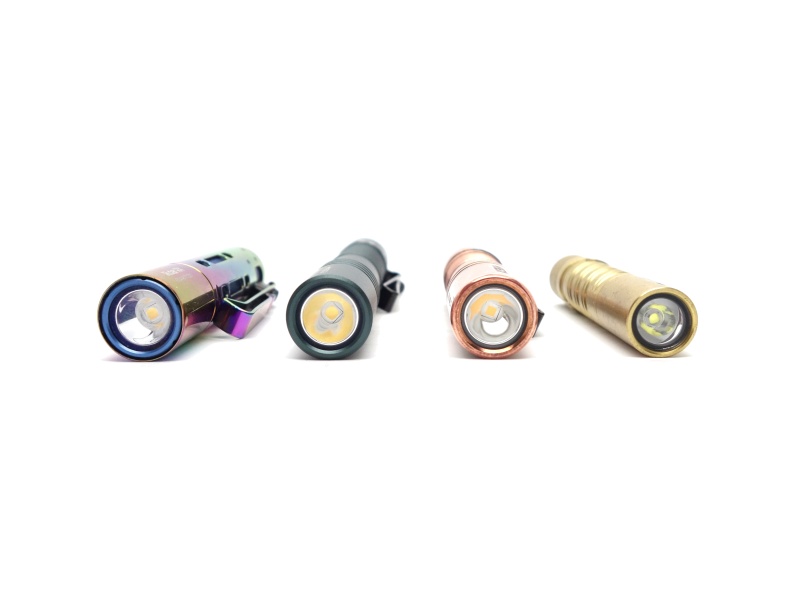
User interface#
A forward-clicky tail switch can be half pressed to momentarily turn the torch on and cycle between Low and High modes. There does not appear to be mode memory. The torch enters Low when it is turned on from off after three seconds.
| State | Action | Result |
|---|---|---|
| Off | Half press | Momentary on (Low) |
| Off | Half press and click | High |
| Off | Click | On (Low) |
| On | Click | Off |
Low voltage protection#
There does not appear to be low voltage protection.
I connected the torch to a bench power supply to see when the driver would stop drawing a current. I started at 4.20V and reduced tthe voltage. The torch turned off at 0.61V.
Other reviewers have reported that one of the two AA Ni-MH cells that they used in series went down to 0V. This is not ideal.
The included ARC14100P cell was 3.10V after the High runtime finished. It is probably best to use the included cell.
PWM#
I did not notice any visible PWM (flickering).
What I like about the UI#
- Simple to use.
- Forward-clicky tailswitch.
What could be improved#
- It would be nice if it had Low, Medium and High modes and defaulted to Low like the Pokelit AA Copper.
Batteries and charging#
Battery#
The Pokelit 2AA came with an Acebeam ARC14100P-160A 1600mAh 3.7V Li-ion cell with built-in USB-C charging. The cell arrived with a voltage of 3.78V. Insulating film, to avoid accidental activation, was found in the tube.
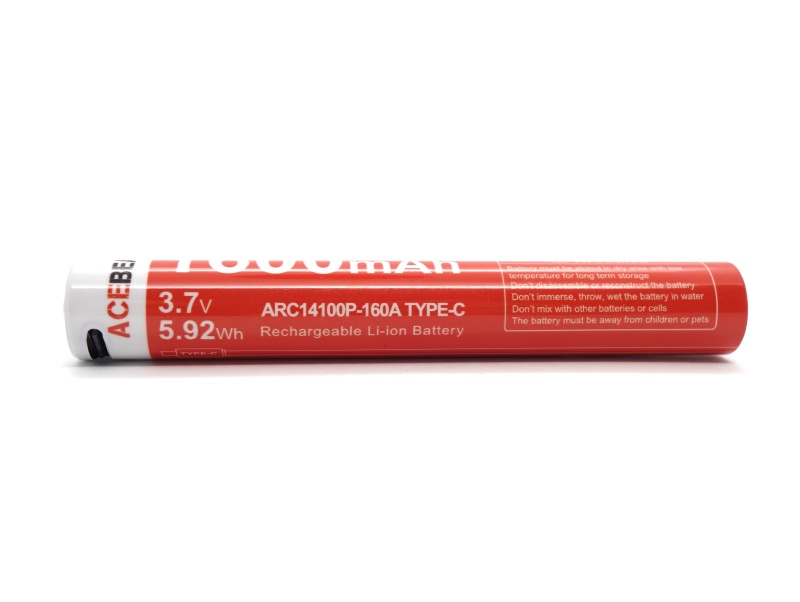
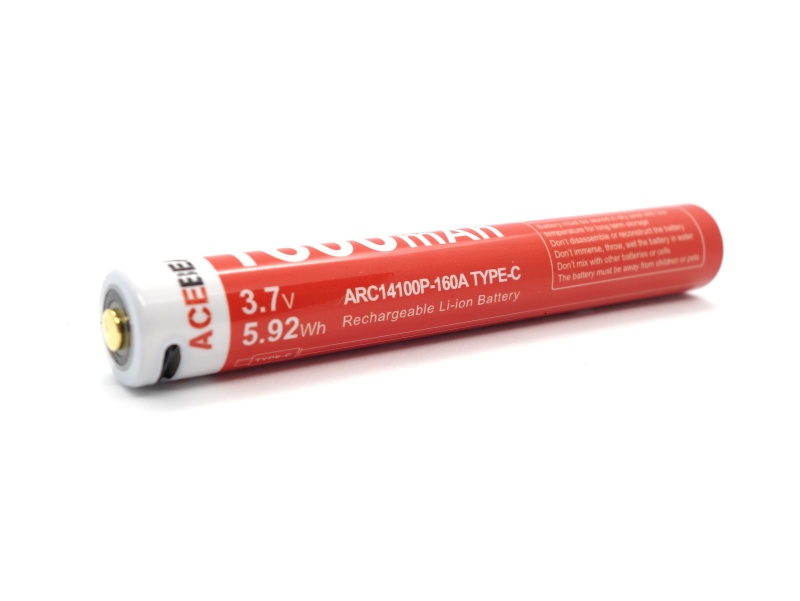
The torch also supports two AA alkaline or two Ni-MH rechargeable batteries.
Li-ion 14500 3.7V cells cannot be used.
Charging#
The included Li-on cell has built-in USB-C charging. Charging stopped at 4.17V.
Power supply compatibility#
I tried the following power supplies with the included cells built-in USB-C charger:
| Power supply | USB Type | Protocol | Does it charge? |
|---|---|---|---|
| Apple 61W Power Adapter | USB-C | PD | Yes |
| Google Pixel Power Adapter | USB-C | PD | Yes |
| PinePower Desktop | USB-C | PD | Yes |
| PinePower Desktop | USB-A | QC | Yes |
| Generic 5V 2.4A Power Adapter | USB-A | Yes |
USB-C to USB-C works.
Performance#
Official specifications from the manual:
Li-ion Battery (Acebeam ARC14100P-160A 1600mAh)
| FL1 Standard | High | Low |
|---|---|---|
| Light Output | 600-360lm | 20lm |
| Runtime | 35s + 1h 44min | 23h |
| Throw | 101m | |
| Intensity | 2,550cd |
2x Ni-MH Battery
| FL1 Standard | High | Low |
|---|---|---|
| Light Output | 300-100-50lm | 0.5lm |
| Runtime | 35s + 5h 13min + 10min | 13.5days |
2x Alkaline Battery
| FL1 Standard | High | Low |
|---|---|---|
| Light Output | 300-100-50lm | 0.5lm |
| Runtime | 35s + 3h 13min + 28min | 12days |
Lumen measurements#
I used a UNI-T UT210E clamp meter to measure the current at turn on.
| Mode | Amps at start | Specs | Lumens @turn on | Lumens @30 sec | Lumens @10 min |
|---|---|---|---|---|---|
| Low | 0.06 A | 20 | 20 | 22 | 23 |
| High | 1.80 A | 600 | 739 | 671 | 380 |
The included cell was used.
Standby drain#
There is no standby drain. This torch has a mechanical tail switch.
Runtime graphs#
I used my own DIY lumen tube with a TSL2591 sensor and forked bmengineer’s project RuTiTe to record runtimes.
Note: Lumen measurements may be off by 10% with my DIY lumen tube.
High started at 739 lumens, quickly dropped to 400 lumens after 1 minute 30 seconds, and gradually dropped to 220 lumens before switching off around 1 hour 50 minutes. My observations align with Acebeam’s estimates.
Low maintained around 20 lumens for 3 hours and gradually dropped to 6 lumens by 24 hours. I stopped the runtime test at 24 hours.
I have not tested 2x Ni-MH and Alkaline batteries.
Throw#
I positioned the Acebeam Pokelit 2AA two metres away from a UNI-T UT383BT light meter and took lux measurements after 30 seconds for Low and High modes.
The included cell was used.
| Mode | Specs (cd) | Specs (m) | Candela measured (cd) | Distance (m) |
|---|---|---|---|---|
| Low | 44 | 13 | ||
| High | 2,550 | 101 | 1,932 | 87 |
Beamshots#
I went to a local park and aimed the Acebeam Pokelit 2AA at a tree 70 metres away while using High.
Beamshots were taken using a Sony RX100M2 using 3.2", f3.2, ISO 800, 5000K WB.
Acebeam Pokelit 2AA (High)#

Acebeam E70 Mini (Turbo)#

Olight Warrior Mini 2 (Turbo)#

Conclusion#
The Acebeam Pokelit 2AA is a good option for enthusiasts who want a torch that produces a lovely beam. It comes at a modest price, has an excellent build quality and good runtimes.
I would recommend the Pokelit 2AA if you are looking for a penlight with a high CRI emitter. If you prefer a smaller EDC torch then the Pokelit AA Copper may be a better option. But then you enter the wonderful world of single AA/AAA torches where you are spoilt for options (ReyLight comes to mind).
I hope that Acebeam continues to make torches that can easily be opened up so that enthusiasts can personalise their torches.
Thank you Neal and Acebeam for your support. I hope that everyone has a safe new year!
Pros:#
- Excellent build quality.
- Nichia 519A emitter.
- High CRI.
- Emitter is accessible.
- Good runtimes.
- Multiple battery types supported.
Cons:#
- Low voltage protection could be improved.
- Uncomfortably warm while using High.
Product page#
Promo code: TIMMC
Nealsgadgets.com affiliate link
I may earn a commission if you use an affiliate link or a promo code. This will help fund future torch reviews and tutorials.
